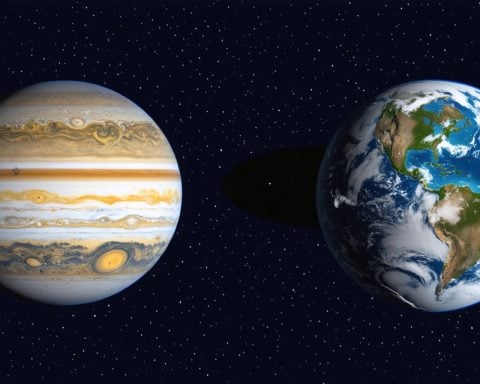- Iran is launching the next-generation Pars 2 Satellite and the Navak Telecommunications Satellite on National Technology Day.
- The Pars 2 Satellite boasts 8-meter color resolution and 4-meter black-and-white resolution for enhanced earth observation.
- The Navak Telecommunications Satellite will improve high-altitude communications and extends coverage in the region.
- Iran has 25 additional satellites in development and 8 are ready for launch, indicating its strong commitment to space exploration.
- These advancements position Iran as a growing player in the global space arena with significant implications for regional connectivity and technology.
Iran is poised to make a dazzling leap in its space ambitions with the upcoming launch of the next-generation Pars 2 Satellite and the groundbreaking Navak Telecommunications Satellite. These two powerful assets are set to debut on National Technology Day, promising to revolutionize how Iran connects and explores the cosmos.
Imagine the Pars 2 Satellite, equipped with astounding imaging capabilities: an 8-meter color resolution and an impressive 4-meter black-and-white resolution. These features will pave the way for unmatched clarity in earth observation—benefiting agriculture, urban planning, and environmental monitoring. Picture a world where satellite imagery transforms decision-making processes!
But the excitement doesn’t end there! The Navak Telecommunications Satellite, operating from a unique elongated elliptical orbit, is designed to enhance high-altitude communications like never before. This first-of-its-kind satellite could redefine connectivity in the region, offering extended coverage and reliability that simply wasn’t possible until now.
Iran’s commitment to advancing its space program is undeniable, with 25 other satellites in development and 8 ready for launch. This ambitious expansion signals Iran’s serious intentions to become a key player in the global space arena.
As these satellites prepare for launch, they offer a glimpse into a future where regional communication and technology reach new heights. Stay tuned for these pivotal moments in Iran’s space journey—this is just the beginning of a thrilling adventure into the stars!
Iran’s Space Revolution: Unveiling the Future of Communication and Earth Observation
Iran’s Next-Generation Space Ambitions
Iran is on the brink of a transformative era in its space endeavors with the imminent launch of the Pars 2 Satellite and the Navak Telecommunications Satellite. Set to debut on National Technology Day, these satellites are poised to enhance the country’s capabilities in earth observation and communications, positioning Iran as a significant player in the global space landscape.
Key Features of the Pars 2 Satellite
The Pars 2 Satellite boasts cutting-edge imaging technology that includes:
– 8-meter color resolution: This allows for highly detailed color images of the Earth’s surface.
– 4-meter black-and-white resolution: This feature ensures even sharper monochrome images, essential for precise analysis.
These advancements will greatly benefit various sectors such as:
– Agriculture: By providing detailed imagery crucial for farming practices.
– Urban planning: Facilitating smarter and more efficient city layouts.
– Environmental monitoring: Supporting efforts in conservation and resource management.
Innovations with the Navak Telecommunications Satellite
The Navak Telecommunications Satellite introduces a groundbreaking design:
– Operating from a unique elongated elliptical orbit, which enhances high-altitude communications.
This innovation is expected to:
– Revolutionize connectivity: Offering expansive coverage that significantly improves the reliability of communication networks in the region.
– Support the development of local technologies: Empowering businesses and governments by providing better access to reliable telecommunications.
Current and Future Developments in Iran’s Space Program
Iran is not resting on its laurels; the nation is rapidly advancing its space initiatives with:
– 25 additional satellites currently under development.
– 8 satellites ready for launch, underscoring the government’s commitment to expanding its presence in space technology and applications.
Frequently Asked Questions
1. What implications do the Pars 2 and Navak satellites have for civil applications?
Both satellites are expected to significantly enhance civil applications in Iran. The Pars 2 Satellite will provide high-resolution imagery beneficial for agriculture and urban planning, while the Navak Satellite will improve communication capabilities across remote regions, facilitating better connectivity for both urban and rural communities.
2. How does Iran’s space program impact its international relations?
Iran’s advancements in space technology could provoke mixed reactions globally. Some countries may perceive it as a move toward greater technological autonomy and a potential military enhancement, while others may see it as an opportunity for cooperation in peaceful space exploration.
3. Are there any risks associated with Iran’s satellite launches?
Yes, there are inherent risks associated with satellite launches, including potential technical failures, which can result in loss of hardware and data. Additionally, there are geopolitical risks as some nations may view Iran’s growing technological capabilities with suspicion, possibly leading to increased tensions in the region.
Related Insights and Trends
As Iran continues to develop its space capabilities, the potential for collaboration with other nations in peaceful space applications emerges. Moreover, the increasing competition in space technology among nations can lead to innovative practices and improved global communication networks.
For more information on space technologies and innovations, visit NASA.
In conclusion, Iran’s enthusiastic leap into the cosmos heralds a new age of technological advancement that promises to transform not only its own infrastructure but also the regional communication landscape. Stay tuned for more updates as these vital satellites prepare for their critical missions!


















